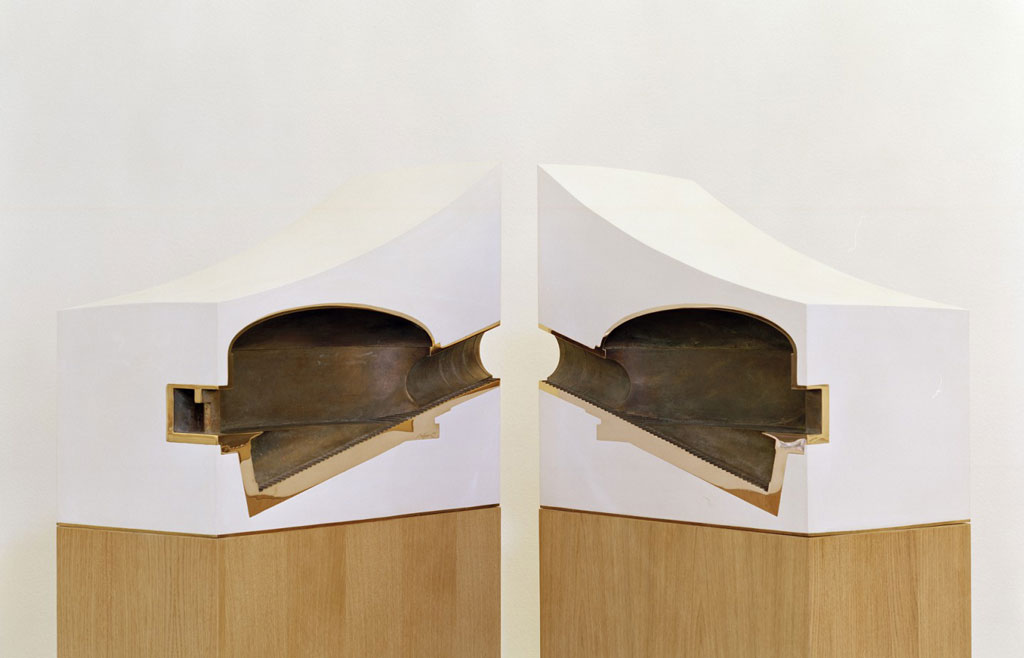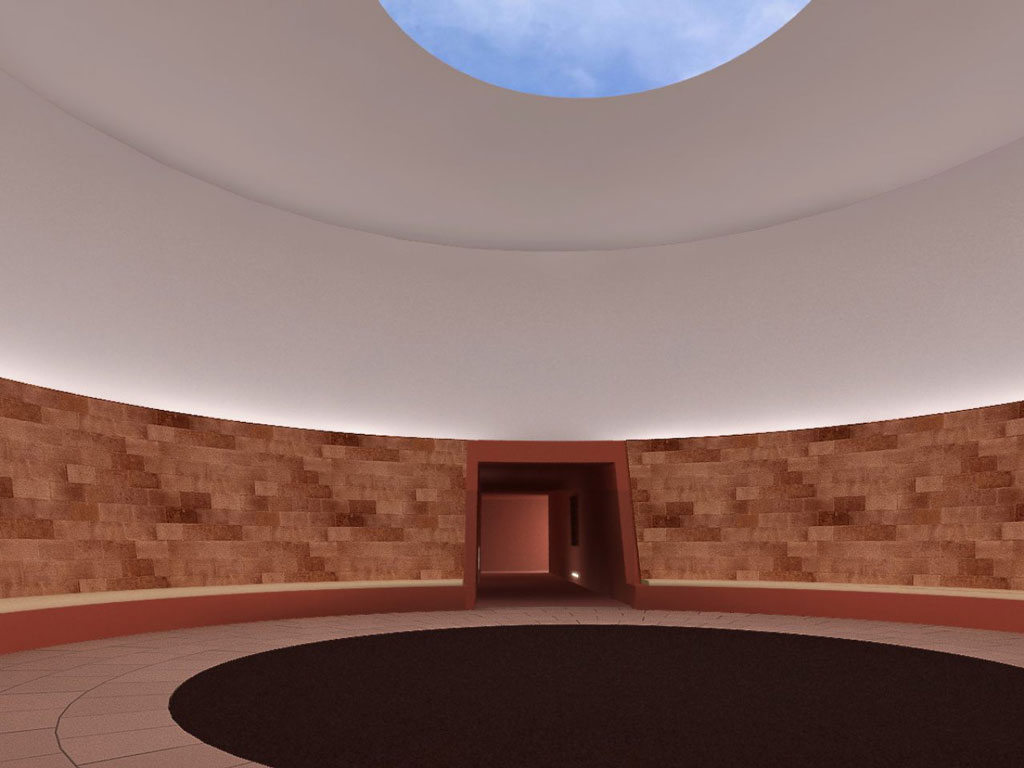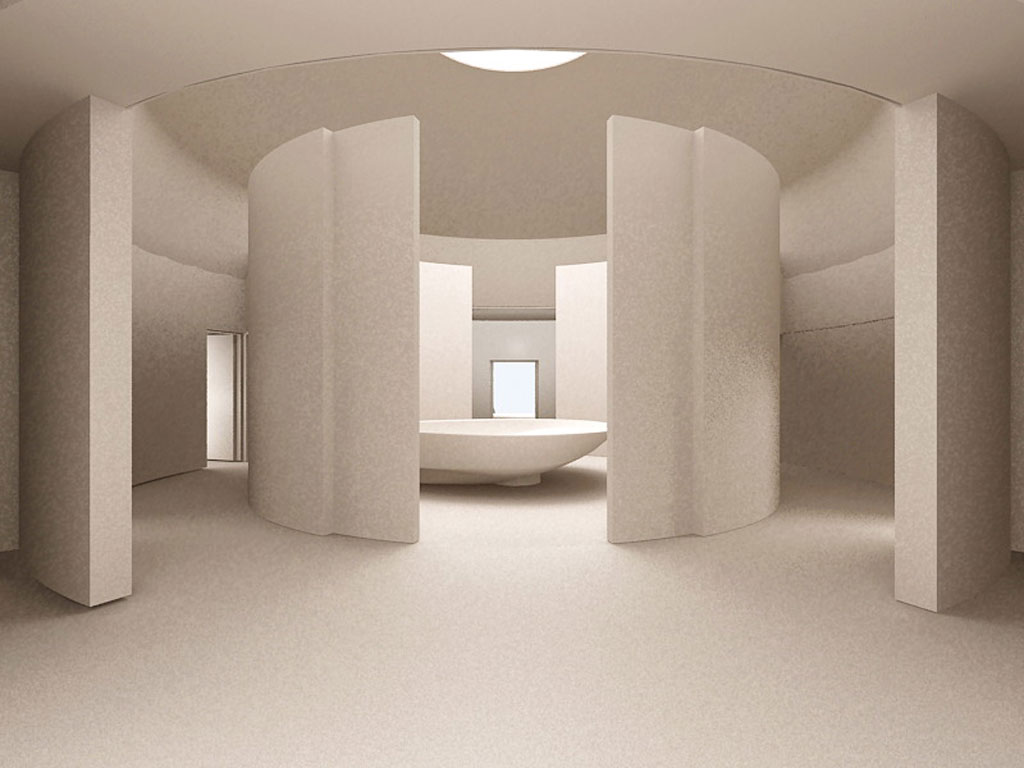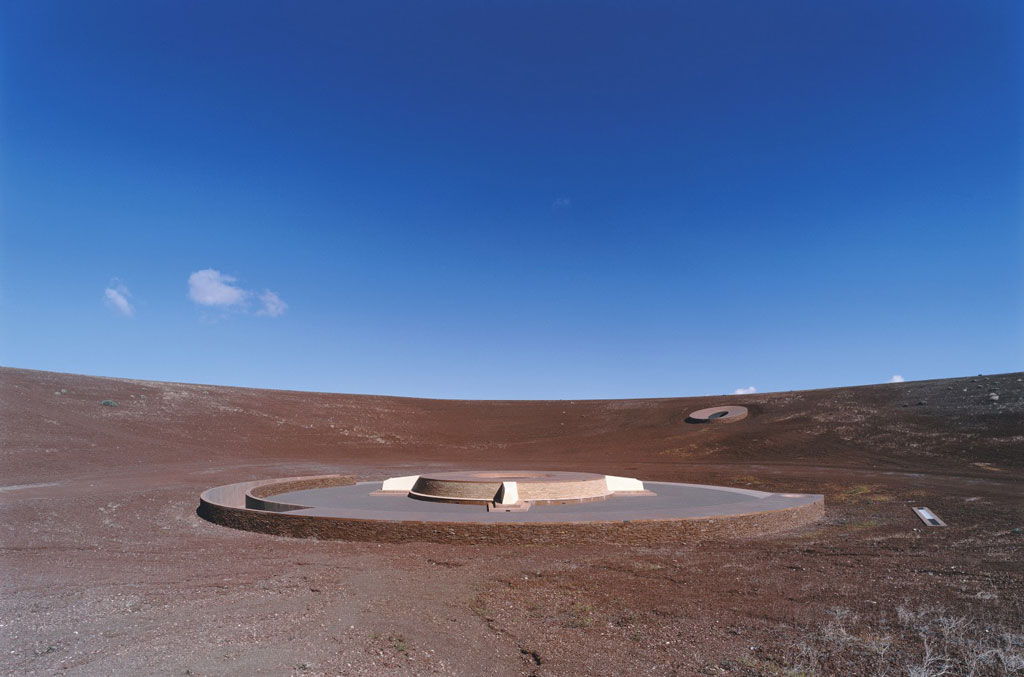ART-PRESENTATION: James Turrell-Roden Crater Project
 One of the last big scale Land Art works is the 4.8km wide Roden Crater, located in the Painted Desert region of Northern Arizona, is currently being transformed by Light and Space artist James Turrell into a large-scale and open-plan observatory where visitors can experience sky-light and its naturally majestic cycle through the purest viewing platform ever constructed.
One of the last big scale Land Art works is the 4.8km wide Roden Crater, located in the Painted Desert region of Northern Arizona, is currently being transformed by Light and Space artist James Turrell into a large-scale and open-plan observatory where visitors can experience sky-light and its naturally majestic cycle through the purest viewing platform ever constructed.
By Dimitris Lempesis
Photo: The Skystone Foundation
James Turrell got his pilot’s license at 16 years old, following in the footsteps of his late father, who had been an aeronautical engineer. Because of his Quaker background, he was sent for alternative service to Laos during the Vietnam war. He flew U2 planes (ultra-high altitude aircraft developed by the U.S. Air Force for reconnaissance). Flying these secret missions over Tibet and the Himalayas exposed him to changes in vision at high altitude. For years he had searched for a large site that was isolated from the lights of civilization and raised above the surrounding land. Always an avid aviator and independent spirit, he flew six days a week for seven months between the Western foothills of the Rocky Mountains and the Pacific Coast, sleeping under the wing of his plane. Finally, he found Roden Crater. “Roden Crater” is a controlled environment for the experiencing and contemplation of light. It takes its place within the tradition of American landscape art that began in the 1960s, requiring a journey to visit the work in the remote desert with truly dark night skies. While minimally invasive to the external natural landscape, internally the red and black cinder has been transformed into special engineered spaces where the cycles of geologic and celestial time can be directly experienced. It will constitute a truly culminating phenomenon in world art. Roden Crater is a gateway to the contemplation of light, time and landscape. It is the magnum opus of James Turrell’s career, a work that, besides being a monument to Land Art, functions as a naked eye observatory of earthly and celestial events that are both predictable and continually in flux. Constructed to last for centuries to come, Roden Crater links the physical and the ephemeral, the objective with the subjective, in a transformative sensory experience. The first major phase of construction included the movement of over 1.3 million cubic yards of earth to shape the Crater Bowl and the construction of the 854′ East Tunnel. Six spaces were completed, including two of the most difficult, the shaping of the Crater Bowl and the Alpha (East) Tunnel. The Sun|Moon Chamber, East Portal, and the Crater’s Eye, are joined by the Alpha (East) Tunnel and a connecting tunnel to the Crater Bowl. When complete, the project will contain 21 viewing spaces and six tunnels. Throughout the planning and construction of Roden Crater, Turrell consulted with noted astronomers including E.C. Krupp, Director of the Griffith Observatory in Los Angeles, and the late Richard Walker, an astronomer with the U.S. Naval Observatory in Flagstaff, in order to calculate the excavation and alignment of the Crater’s tunnels and apertures. When completed the structures within the Crater will form a vast naked eye observatory for celestial objects and events ranging from obscure and infrequent to the more familiar summer and winter solstice. The East Portal, the Alpha (East) Tunnel and the Sun|Moon Chamber act in concert as a monumental Camera Obscura, or pinhole camera. Transmitting light from the East Portal aperture, the Alpha (East) Tunnel focuses images on the west side of the monumental image stone in the Sun|Moon Chamber annually for the southernmost sunset and every 18.61 years to mark the Major Lunar Standstill. Annually, ten days before and ten days after the Winter Solstice (Dec 11th and Dec 31st with additional imaging on three days before and after those dates), the annual southernmost sunset, offset by the dates above, is imaged on the west side of the image stone. The image is enlarged and brightened by a custom ground glass lens set at the mid-point of the tunnel. The Alpha Tunnel also serves as a naked eye telescope to view the setting moon. Every 18.61 years (the most recent was 2006) the moon reaches its northernmost and southernmost maximums known as a Major Lunar Standstill. Viewed through the tunnel, the southernmost moonset will form a reverse image on the west side of the image stone. The next Major Lunar Standstill is calculated to be at apogee in 2025. The South Space is aligned to the North Star that concentrates the viewer’s attention on the night sky. The central feature is a structure that forms an astronomical instrument similar to the Jai Prakash Yantra in the celestial observatory at Jaipur, India. With this instrument, one can track celestial bodies and events (such as lunar and solar eclipses) as they occur within the timeframe of the 18 year, 11 day Saros Cycle. A single seat provides a view focused on the North Star. The South Space is, in effect, both a space with its own particular characteristics and a calendar for the celestial movements and events that are at the heart of the varied spaces of the Roden Crater project.
As construction on Roden Crater is ongoing, it is presently closed to the public.
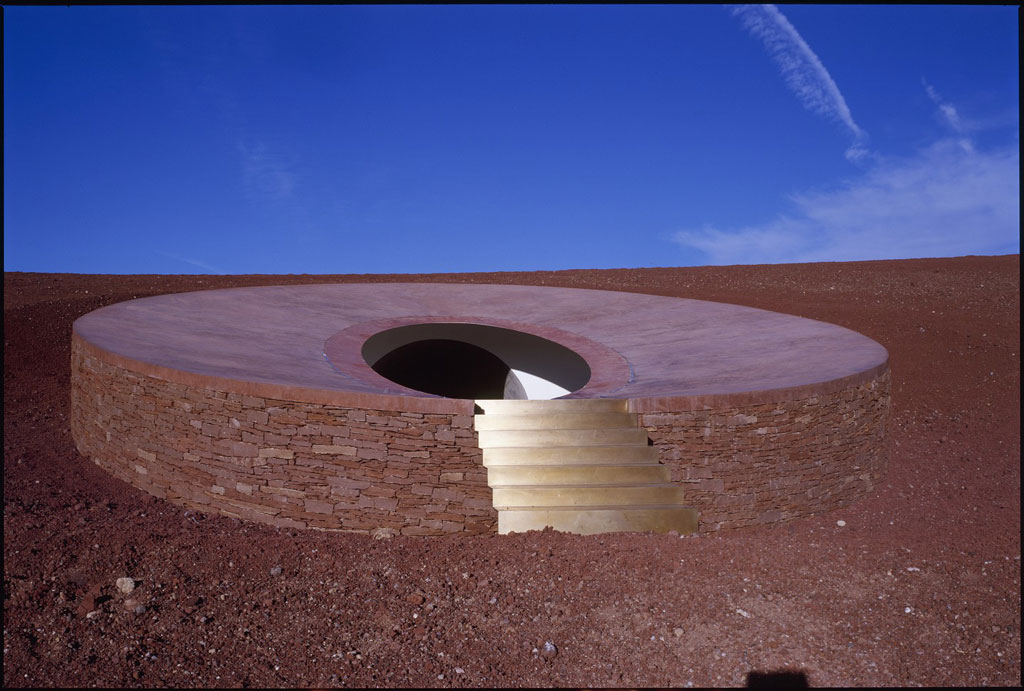
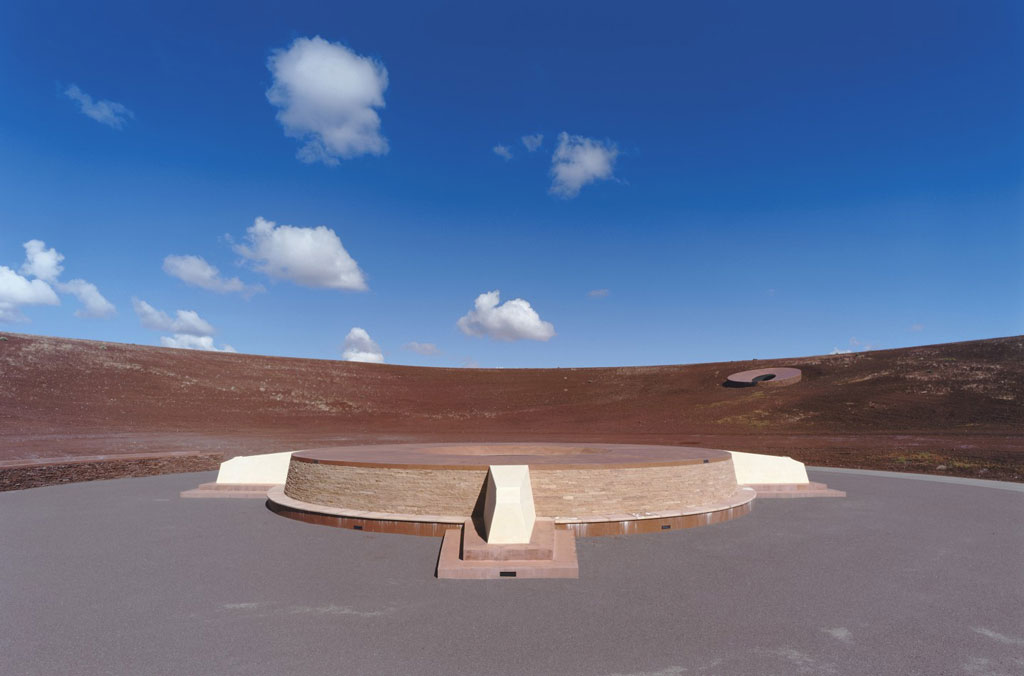
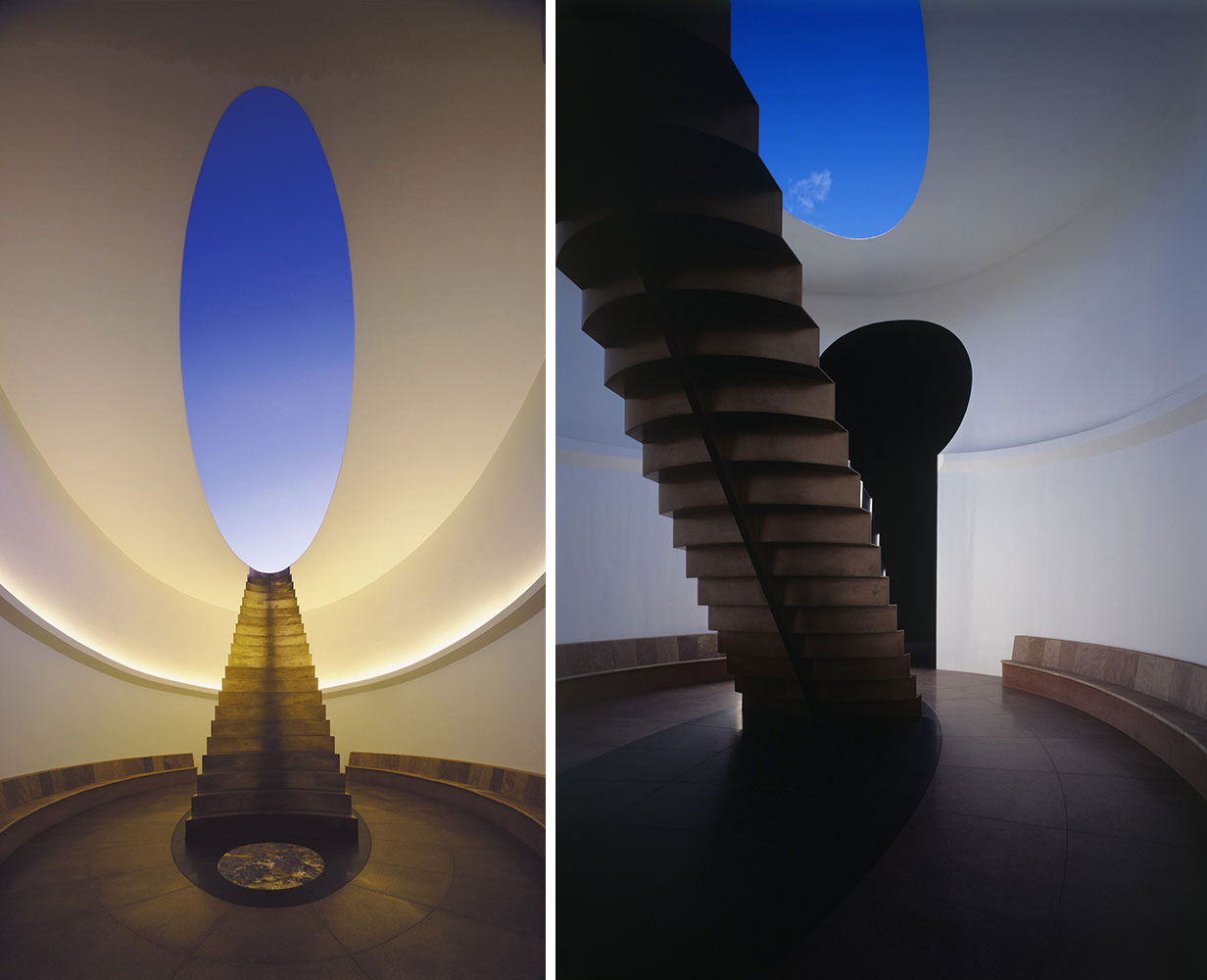
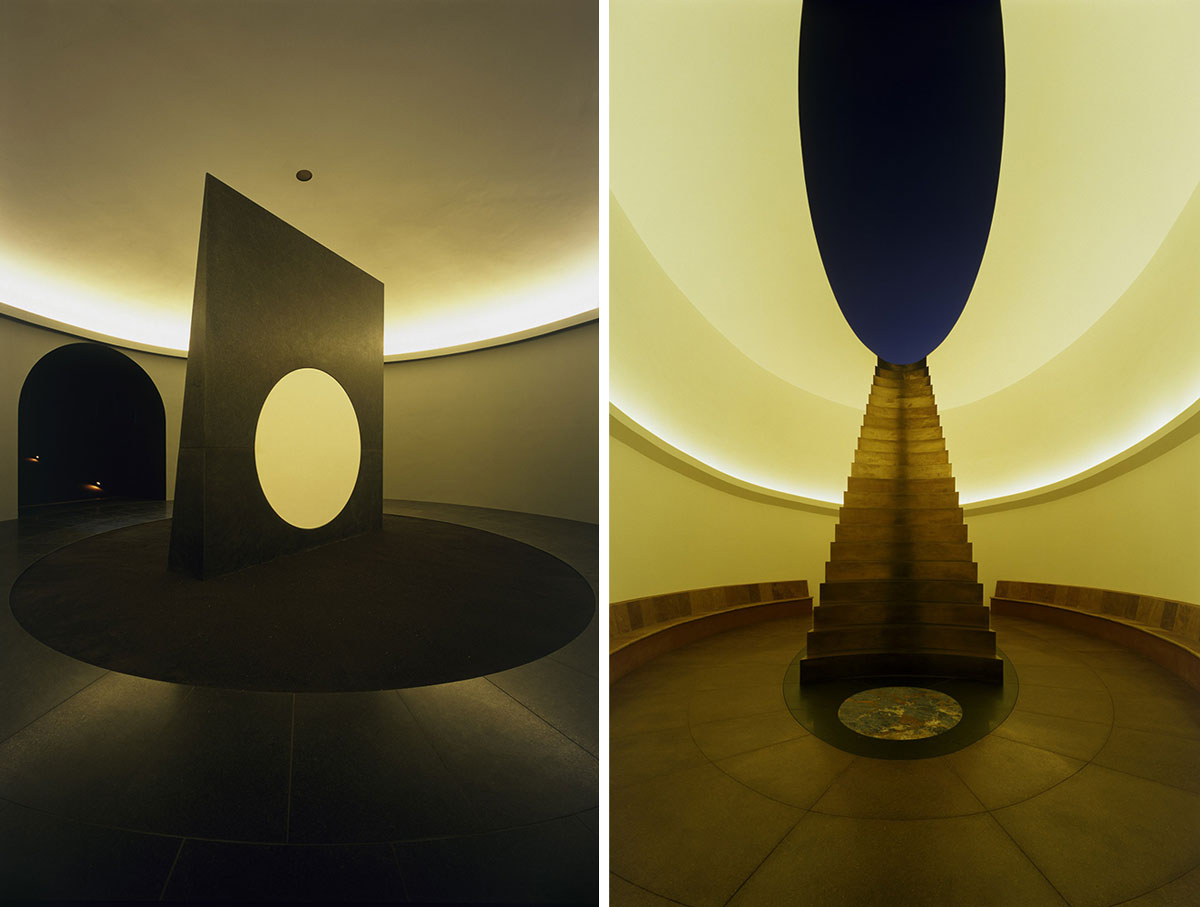
Right: Center: Roden Crater – East Portal, Photo: Florian Holzherr, ©2020 Skystone Foundation; © James Turrell
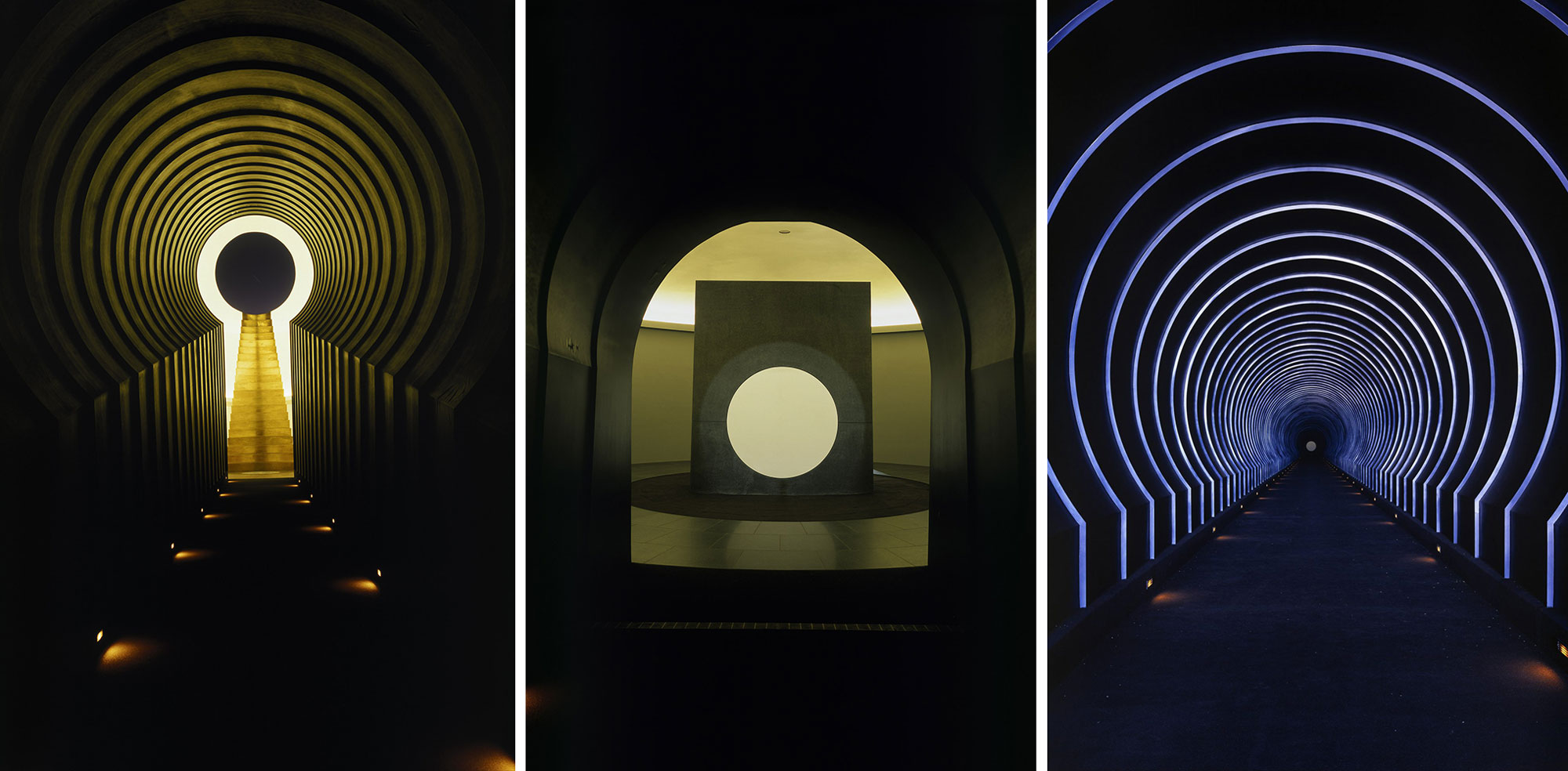
Center: Roden Crater – Sun Moon Champers, Photo: Florian Holzherr, ©2020 Skystone Foundation; © James Turrell
Right: Center: Roden Crater – Alpha East Tunel, Photo: Florian Holzherr, ©2020 Skystone Foundation; © James Turrell
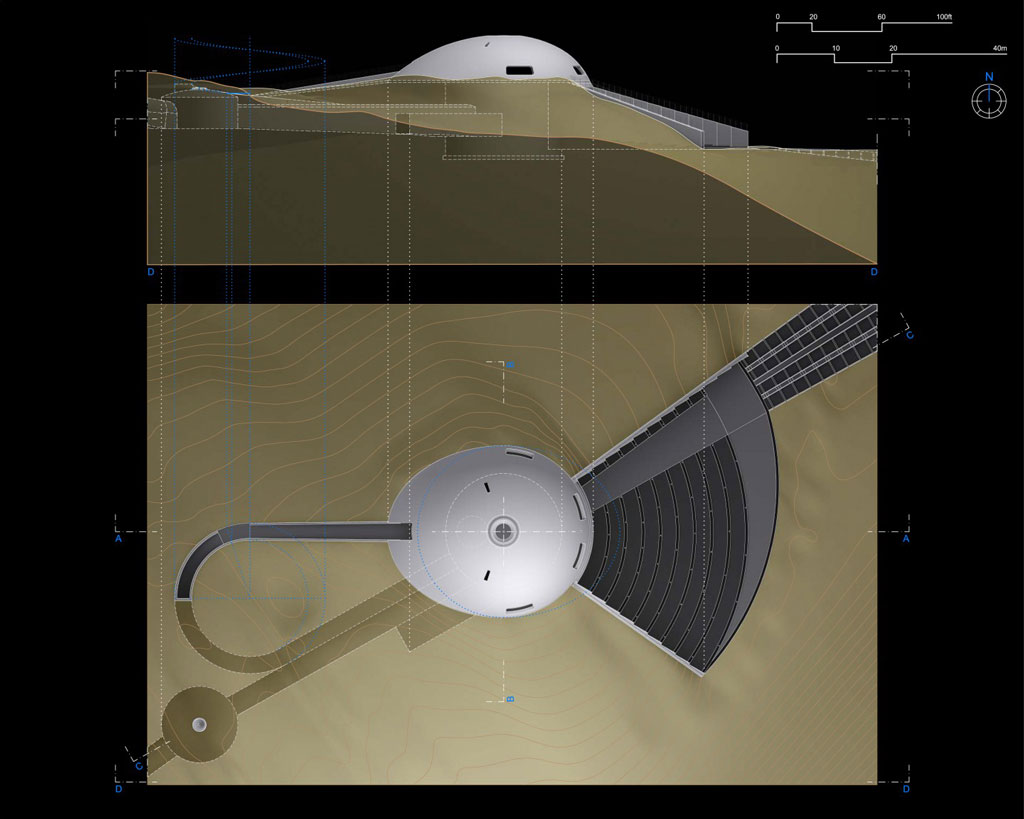
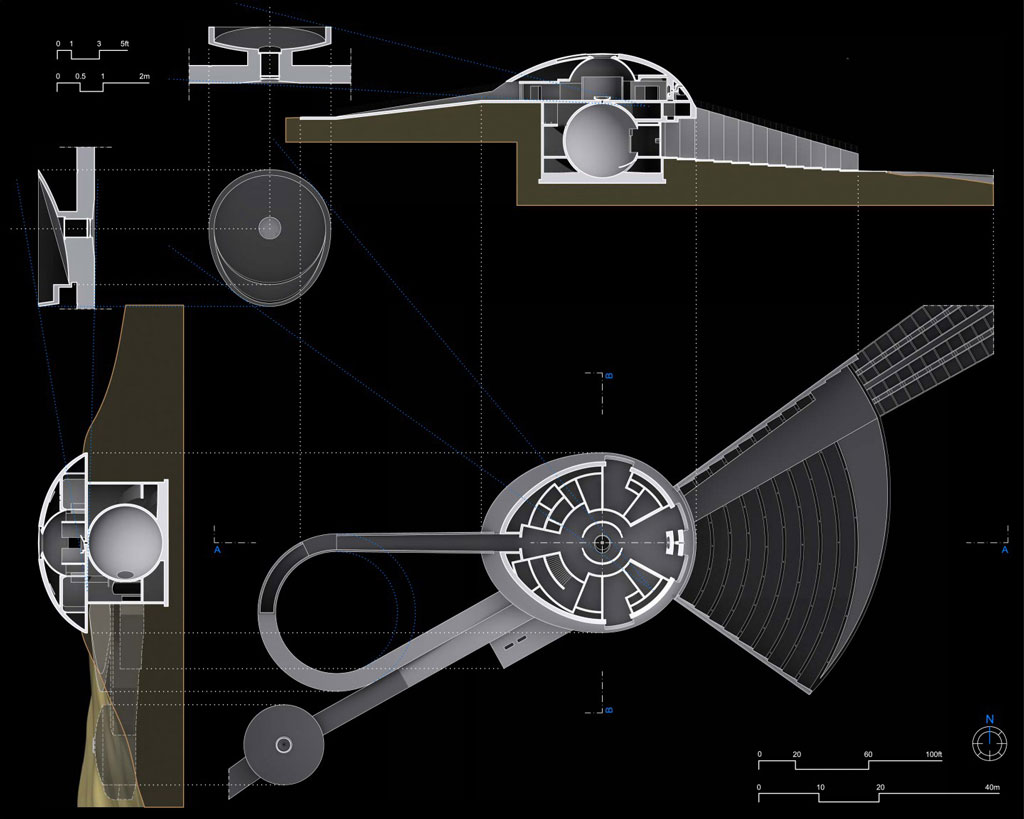
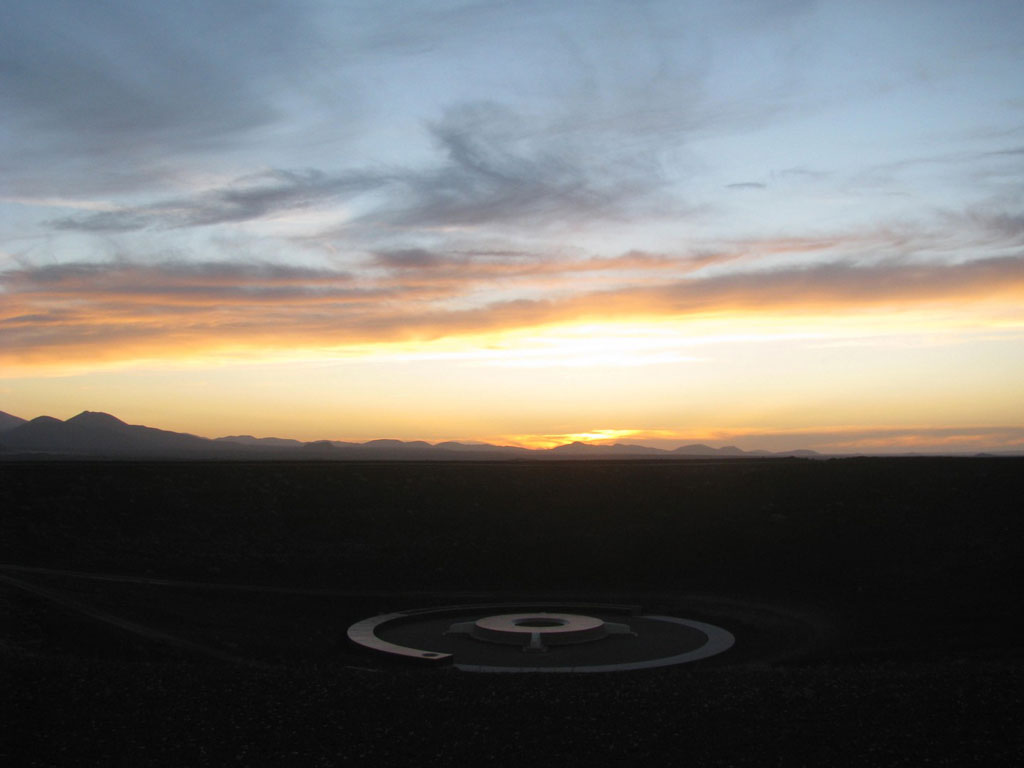
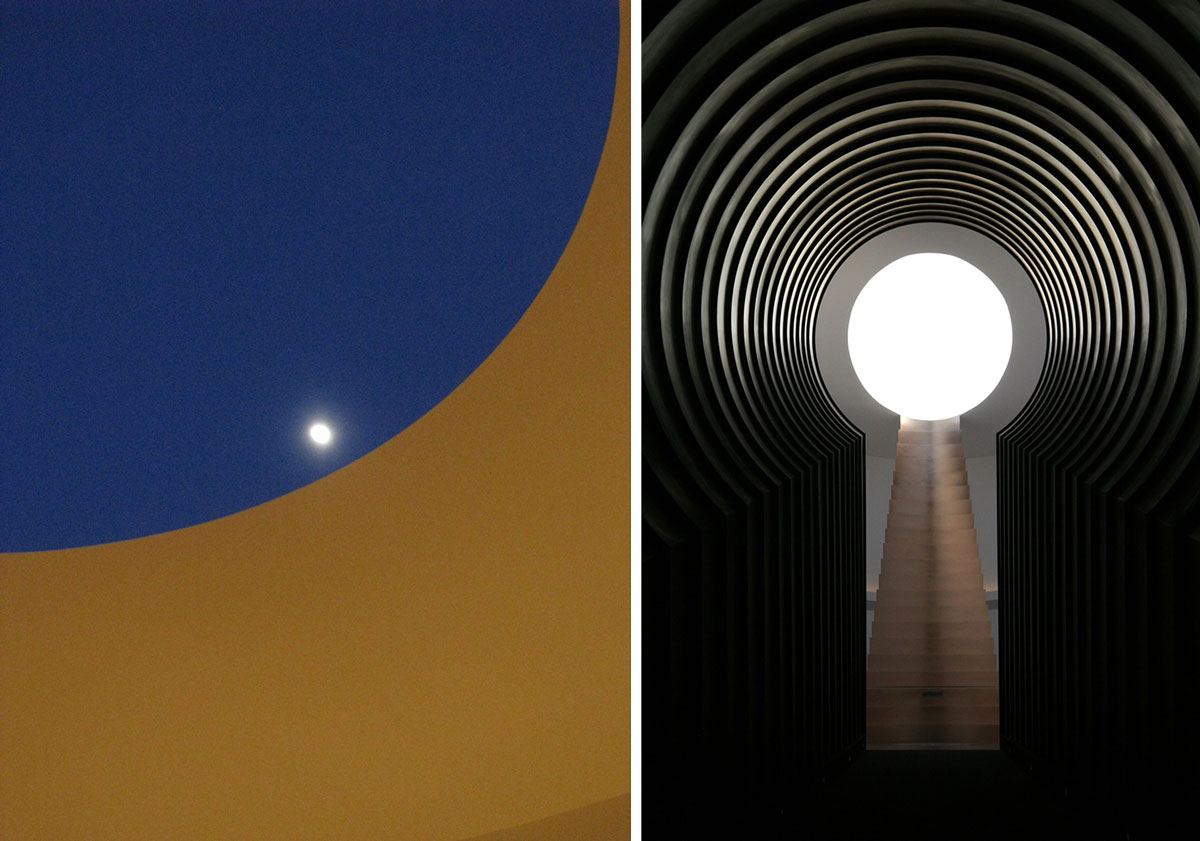
Right: Center: Roden Crater – Alpha East Tunnel, Photo: Florian Holzherr, ©2020 Skystone Foundation; © James Turrell
